Kalpana Chawla, who was born on March 17, 1961, entered the hallowed records of space exploration history by becoming the first Indian woman in space. We revisit other such milestones on her 55th birth anniversary
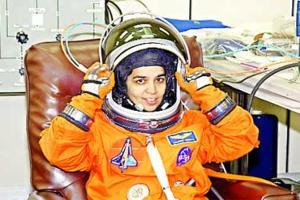
Kalpana Chawla
Let's take a look at some interesting firsts in the world of space.
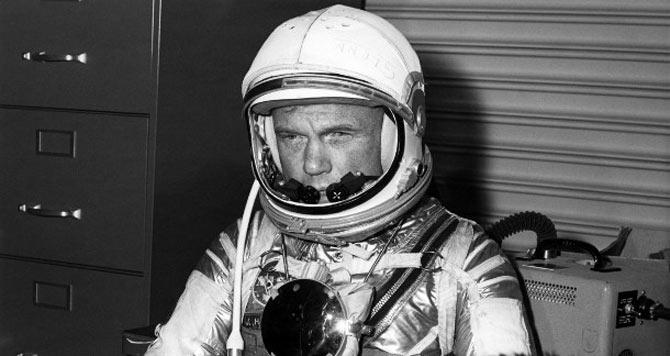
John Glenn is suited up, on January 20, 1962 in preparation for a simulated test during a training session before his 20 February 1962 NASA's Mercury program space flight aboard in the Mercury capsule Friendship 7 in which he became the first American to orbit the Earth. AFP PHOTO/NASA
First American to orbit earth and world's oldest astronaut: John Glenn became one of the 20th century's greatest explorers as the first American to orbit Earth and later as the world's oldest astronaut, and also had a long career as a U.S. senator. Prior to his death he was the last surviving member of the original seven American "Right Stuff" Mercury astronauts. Glenn's three laps around the world in the Friendship 7 capsule on Feb. 20, 1962, forged a powerful link between the former fighter pilot and the Kennedy-era quest to explore outer space as a "New Frontier."
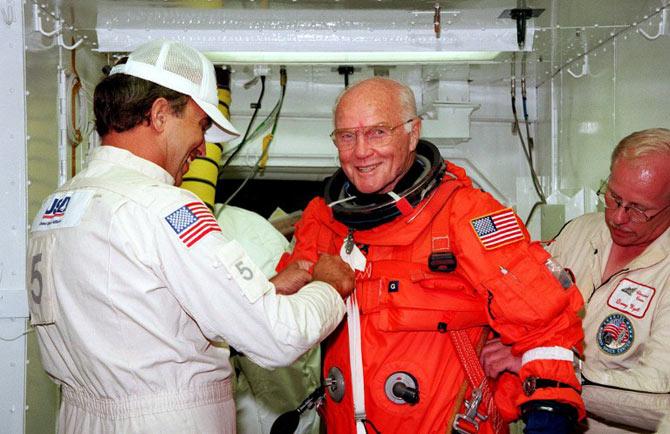
This file photo taken on October 9, 1998 shows US astronaut and Senator John Glenn getting a hand from white room technicians moments before boarding the US space shuttle Discovery. / AFP PHOTO / NASA / HO
Thirty-six years after his maiden space voyage, John Glenn became America's first geriatric astronaut on Oct. 29, 1998. He was 77 when he blasted off as a mission specialist aboard the shuttle Discovery. He saw it as a blow to the stereotyping of the elderly.
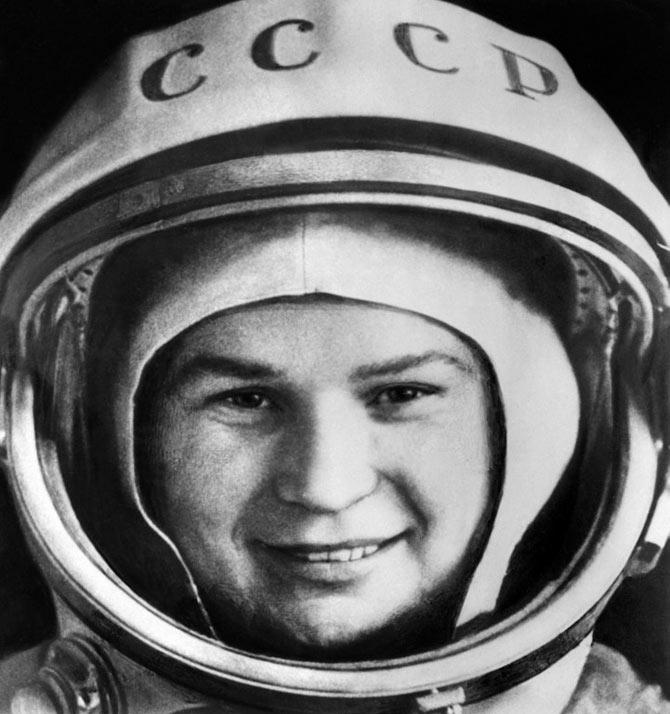
Valentina Tereshkova poses before boarding Vostok 6, at Baikonur cosmodrome, 16 June 1963. Pic/AFP
First woman in space: Valentina Tereshkova travelled aboard Vostok 6 on 16 June 1963. Tereshkova was selected from more than four hundred applicants and five finalists to pilot the spacecraft. In order to join the Cosmonaut Corps, Tereshkova was only honorarily inducted into the Soviet Air Force and thus she also became the first civilian to fly in space.

Astronaut Kalpana Chawla works in the SPACEHAB Research Double Module, 18 Januaary 2003, aboard the Space Shuttle Columbia.
First Indian woman in space: Kalpana Chawla is considered the first Indian woman and the first astronaut of Indian origin to go on a space mission. Chawla, who was born in Karnal, India moved to the United States in 1982 where she obtained a Master of Science degree in aerospace engineering from the University of Texas at Arlington in 1984. She went on to earn a second Masters in 1986 and a PhD in aerospace engineering in 1988 from the University of Colorado at Boulder.

Kalpana Chawla
Kalpana Chawla first flew on Space Shuttle Columbia in 1997 as a mission specialist and primary robotic arm operator. She sadly killed in 2003 at the young age of 40 along with seven crew members in the Space Shuttle Columbia disaster.

Svetlana Savitskaya, during her historic space walk during the mission Soyuz T 12 to the Salyut 7 space station on July 25, 1984. Pic/AFP
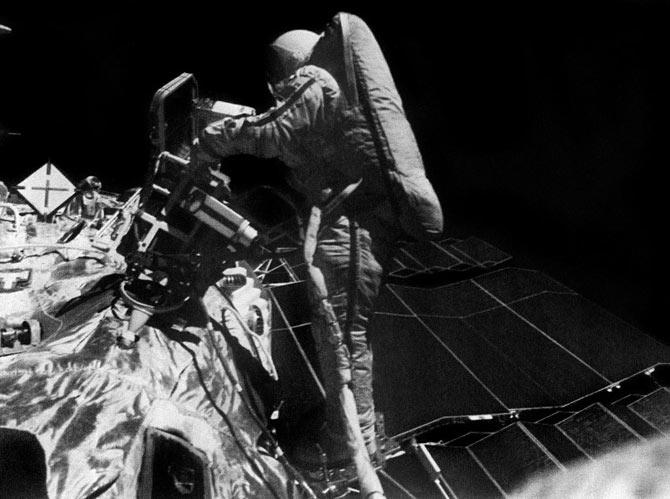
Members of the Soyuz T 12 spaceship, left to right : Vladimir Dzhanibekov, Commander, Svetlana Savitskaya, Flight Engineer and Igor Volk Research Cosmonaut, pose at the Baikonur cosmodrome on July 18, 1984 before launch of the space mission to the Salyut 7 space station. Pic/AFP
First woman to walk in space: Svetlana Savitskaya, a former Soviet aviator and cosmonaut, who flew aboard Soyuz T-7 in 1982, became the first woman to perform a space walk on July 25, 1984. She conducted an EVA outside the Salyut 7 space station for 3 hours 35 minutes during which she cut and welded metals in space along with her colleague Vladimir Dzhanibekov.

Eileen Collins. Pic/AFP
First female pilot and commander of a Space Shuttle: Retired NASA astronaut and United States Air Force colonel Eileen Collins holds this honour. A former military instructor and test pilot, Collins was awarded several medals for her work. Colonel Collins has logged 38 days 8 hours and 10 minutes in outer space. Collins retired on May 1, 2006 to pursue private interests, including service as a board member of USAA.
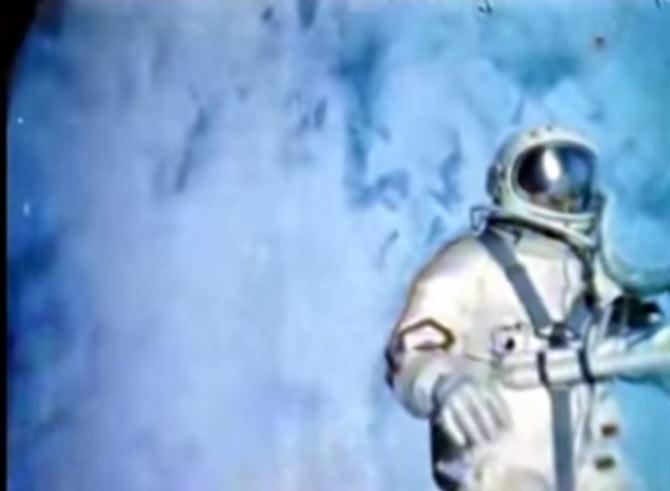
A still from the 1965 Russian documentary 'Moon' showing Aleksei Leonov's EVA. Pic/YouTube
First person to walk in space: On March 18 in 1965, Russian cosmonaut Aleksei Leonov left his spacecraft Voskhod 2 for 12 minutes to perform extra vehicular activity (EVA). Leonov thus became the first person to walk in space.
First space tourist: Dennis Tito holds a special place in space age history for being the first person to fund his own trip into space. In mid-2001, he spent nearly eight days in orbit as a crew member of ISS EP-1, a visiting mission to the International Space Station. Tito was accepted by the Russian Federal Space Agency as a candidate for a commercial spaceflight. He met criticism from NASA before the launch, primarily from Daniel Goldin, at that time the Administrator of NASA, who considered it inappropriate for a tourist to take a ride into space.
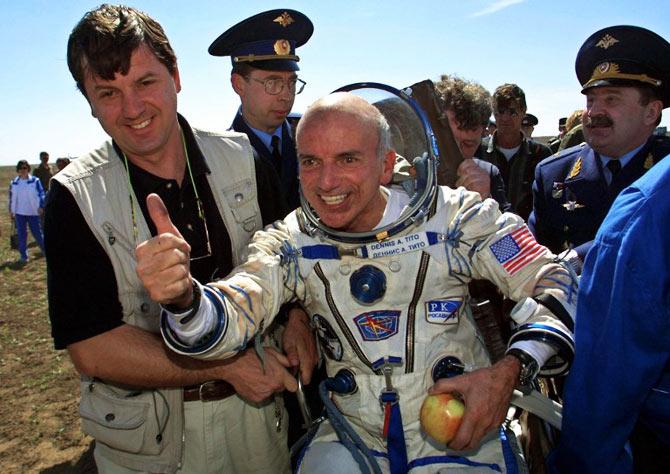
Dennis Tito celebrates after his landing near the Kazakh town of Arkalyk (some 300 km from Astana), 06 May 2001. Pic/AFP
Tito arrived at the Johnson Space Center for additional training on the American portion of the ISS but was sent home because NASA officials were unwilling to train him. He joined the Soyuz TM-32 mission through an arrangement with space tourism company Space Adventures, Ltd on April 28, 2001, spending 7 days, 22 hours, 4 minutes in space and orbiting Earth 128 times.
Tito performed several scientific experiments in orbit that he said would be useful for his company and business and paid a reported $20 million for his trip. He was accompanied by Russian Cosmonauts Talgat Musabayev and Yuri Baturin. Their spacecraft landed successfully back on earth near the Kazakh town of Arkalyk.
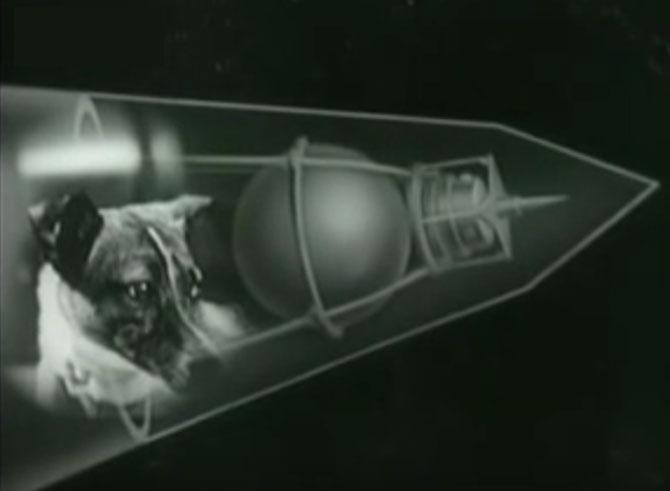
A screen grab from a demonstration video showing Laika inside a diagram of the Sputnik 2. Pic/YouTube
First animal to orbit the Earth: On 3 November 1957, the second-ever orbiting spacecraft carried the first animal into orbit, the dog Laika, launched aboard the Soviet Sputnik 2 spacecraft. She died during the flight, as was intended because the technology to return from orbit had not yet been developed.
First astronaut to wed in space: Twelves years ago on this day, Russian cosmonaut Yuri Malenchenko tied the knot with girlfriend Yekaterina Dmitriyeva in a unique wedding ceremony where Dmitriyeva was on the ground and Malenchenko in space.

Yekaterina Dmitriyeva, the bride of Russian cosmonaut Yuri Malenchenko, poses with a life-sized cutout of her new husband at a press conference in Seabrook, Texas after the ceremony in August 10, 2003. Pic/AFP
This was the first ever wedding in outer space and occured during communication session between International Space Station (ISS) and a restaurant in Houston, Texas.
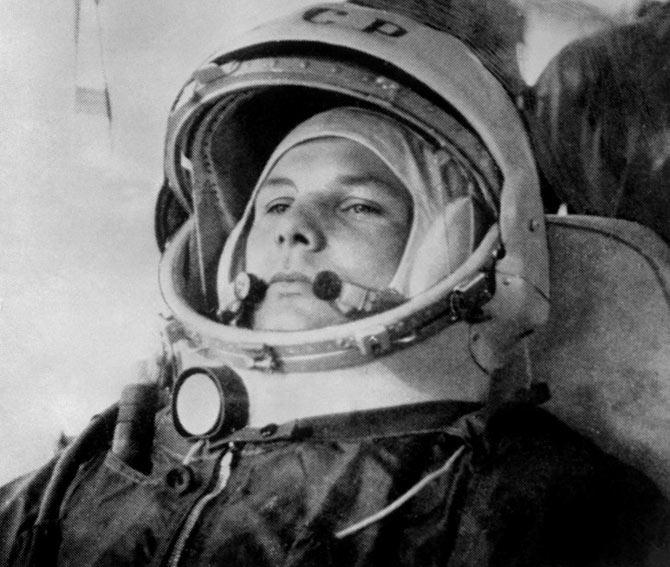
Yuri Gagarin, 27, (1934-68) wearing cosmonaut helmet, prepares to board Soviet Vostok I spaceship 12 April 1961 at Baikonur rockets launch pad shortly before its take-off. Pic/AFP
First human spaceflight: On 12th April 1961, cosmonaut Yuri Gagarin made one orbit around the Earth aboard the Vostok 1 spacecraft. It was launched by the Soviet space program. Gagarin later became deputy training director of the Cosmonaut Training Centre outside Moscow, which was later named after him and died in 1968 when the MiG-15 training jet he was piloting crashed. He was 34.
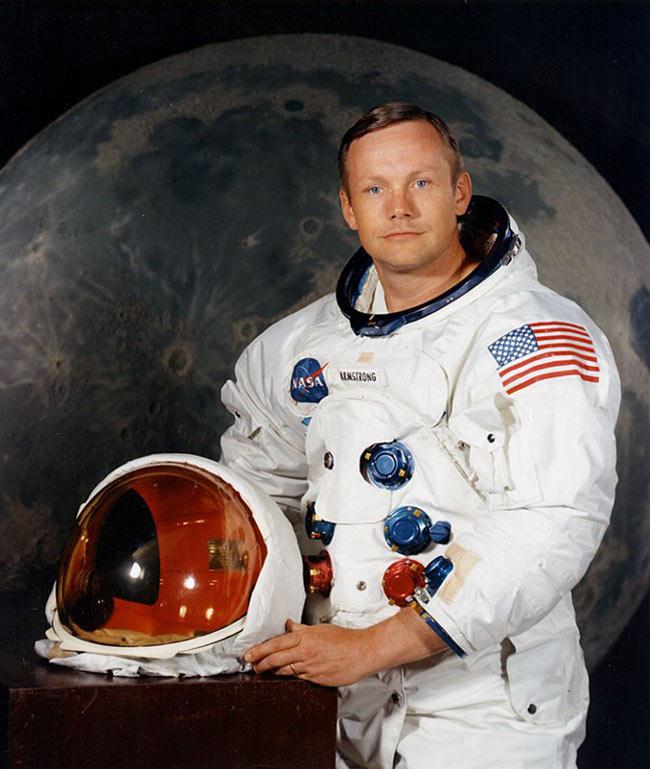
Neil Armstrong. Pic/AFP
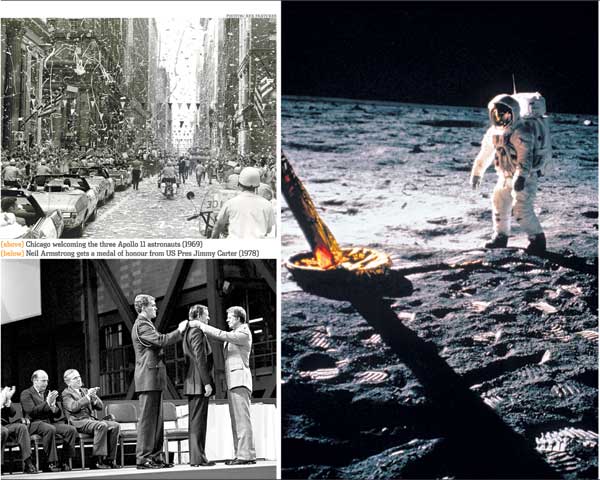
(Clockwise from left) Chicago welcoming the three Apollo 11 astronauts, Neil Armstrong during his historic moon walk (1969) and getting a medal of honour from US President Jimmy Carter (1978)
First man on the moon: American Astronaut Neil Armstrong holds the distinction of being the first human being to set foot on the moon's surface. The missions were conducted by NASA as part of the Apollo program. Fellow astronaut Buzz Aldrin, who was also a part of the program became the second man to accomplish this feat.
First living beings in space: Fruit flies were sent aboard a U.S.-launched V-2 rocket on 20 February 1947 from White Sands Missile Range, New Mexico in order to explore the effects of radiation exposure at high altitudes. The rocket reached 68 miles (109 km) in 3 minutes and 10 seconds, past both the U.S. Air Force 50-mile and the international 100 km definitions of the boundary of space. The Blossom capsule was ejected and successfully deployed its parachute and the flies were recovered alive.
First monkey in space: Before embarking on human spaceflight, animals of various species especially primates were sent on space missions. A rhesus monkey named Albert II became the first monkey in space on 14 June 1949, in a U.S.-launched V2, after the failure of the original Albert's mission on ascent. Albert I reached only 30–39 miles (48–63 km) altitude; Albert II reached about 83 miles (134 km) and died on impact after a parachute failure.
First dogs to make a sub-orbital flight: Dezik and Tsygan were the first dogs to make a sub-orbital flight on 22 July 1951. Both were recovered unharmed after travelling to a maximum altitude of 110 km. Dezik made another sub-orbital flight in September 1951 with a dog named Lisa, although neither survived. After Dezik's death Tsygan was adopted as a pet by Soviet physicist Anatoli Blagonravov.
 Subscribe today by clicking the link and stay updated with the latest news!" Click here!
Subscribe today by clicking the link and stay updated with the latest news!" Click here!









